How to bring research reports into Dovetail
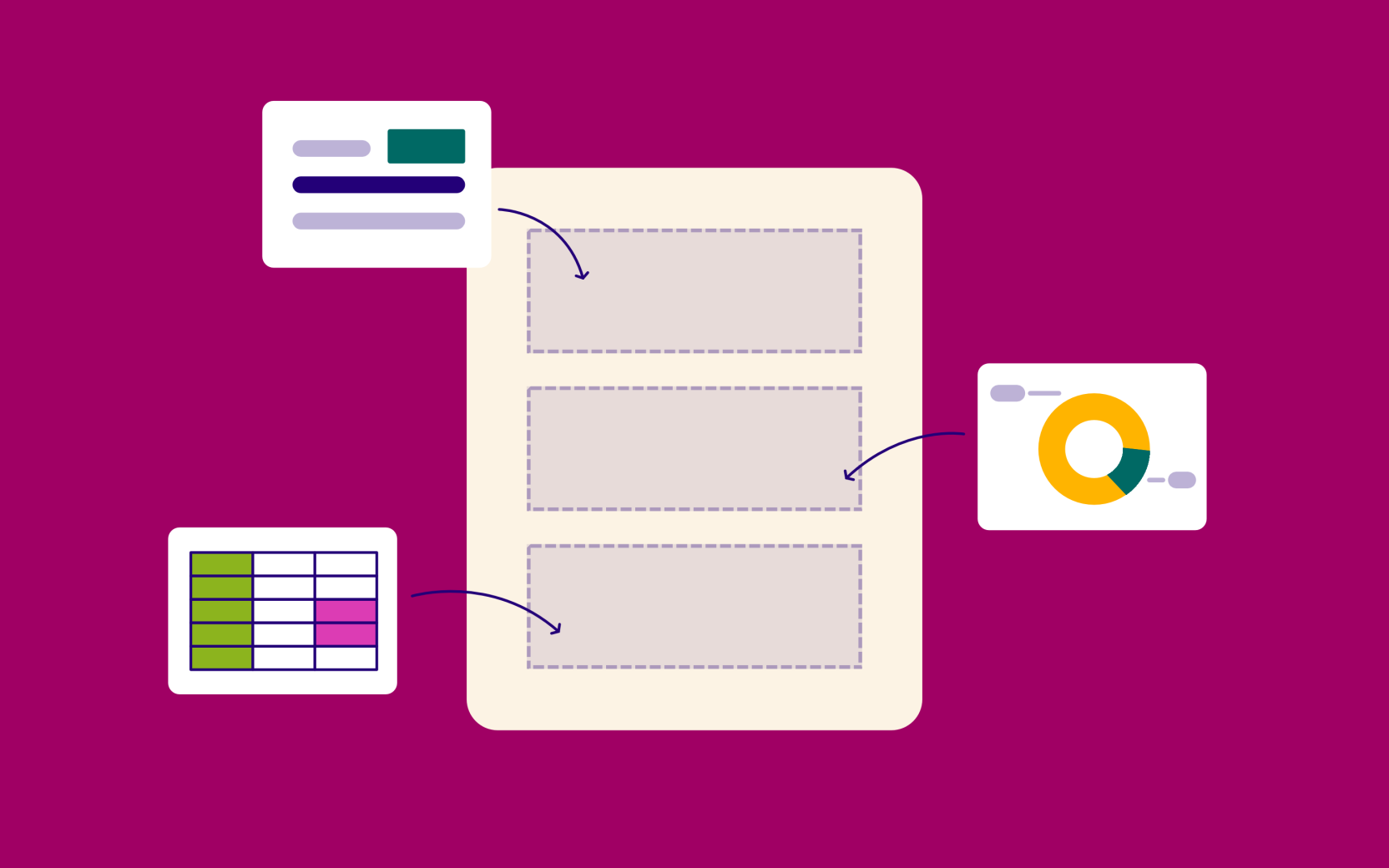
It’s not uncommon for organizations to arrive at Dovetail with a treasure trove of existing research, typically in the form of research reports.
If you’re looking for an efficient way to store and manage these reports, look no further. In this guide, we’ll walk you through how to gather, upload, organize, and share this existing knowledge so that you can stop repeating research and start getting repeated value from your insights.
Gather your existing research
Before you can import your existing user research into Dovetail, you need to gather all the relevant documents and data. For many orgs, this knowledge is fragmented across shared drives, company wikis, emails, and hard drives, and centralizing it can be quite a chore. In these circumstances, we recommend a more incremental approach, prioritizing the migration of key research findings first. To do this, we recommend that you:
Sort user research reports by date, with the most recent reports at the top.
Prioritize reports that are most important to ongoing projects, such as those related to key features or areas of focus.
Include reports that are part of a larger research project, such as those that contain data from multiple sources or that provide an overall summary of research findings.
Finally, prioritize any reports that are due soon or are tied to an upcoming deadline.
Format your existing research
Once you’ve gathered your user research, you need to make sure it’s in the right format for import. For reports, this means making sure the files are in PDF, CSV, PowerPoint or Excel format. This will ensure that the contents of your report will be fully searchable from within Dovetail.
Set up your Dovetail workspace
Before you can import your user research into Dovetail, you’ll need to configure your workspace. This means creating relevant projects for your reports, plus setting up user accounts and assigning roles.
Creating projects
In Dovetail, projects are flexible and can house both raw data and insights. We recommend storing your reports as Insights. To do so, you can create as few or as many projects as you need. For instance, if you have four key customer personas, you may decide to make four projects to house your existing insights about each.
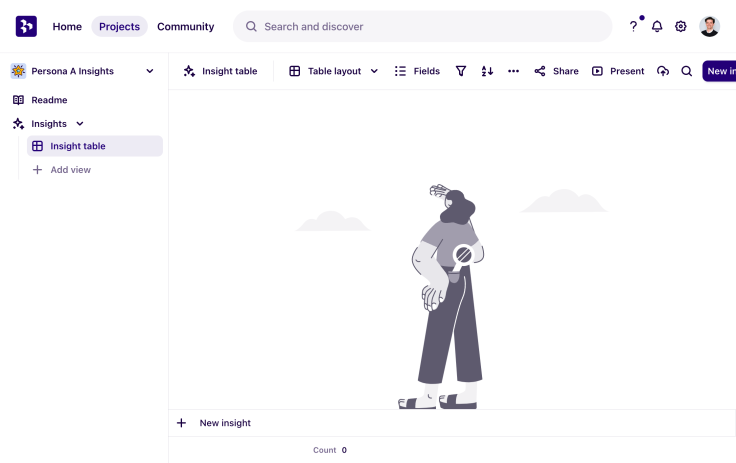
Assigning permissions
Dovetail has a flexible permissions system that allows you to set different levels of access for each user. For example, you can allow a user to only view certain projects, or give a user full administrative access.
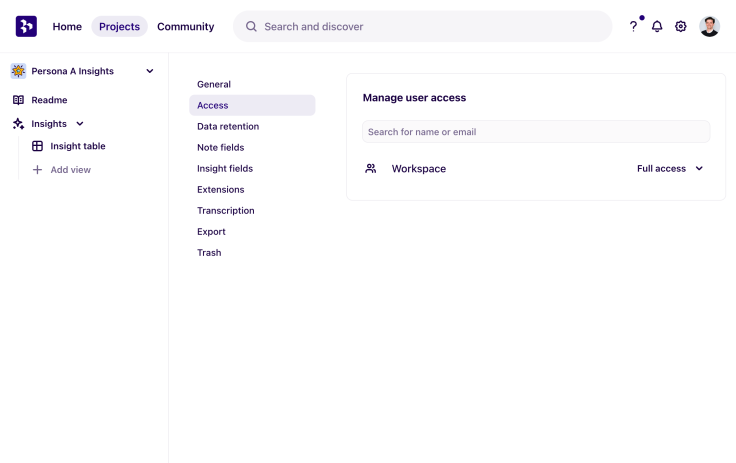
Import your research
Now you can begin the actual import process. Dovetail makes it easy to upload user research documents and data into your account in bulk, allowing you to quickly and easily search for key words and topics. To import a research report, create a new Insights view, then drag and drop your files into the view.

Each of your uploaded files will be stored as a separate insight, with the title of the insight mirroring your file name. From here, you can add fields to group and organize your insights however you would like. For instance, you could create a field named Research style to group your insights by Generative or Evaluative.
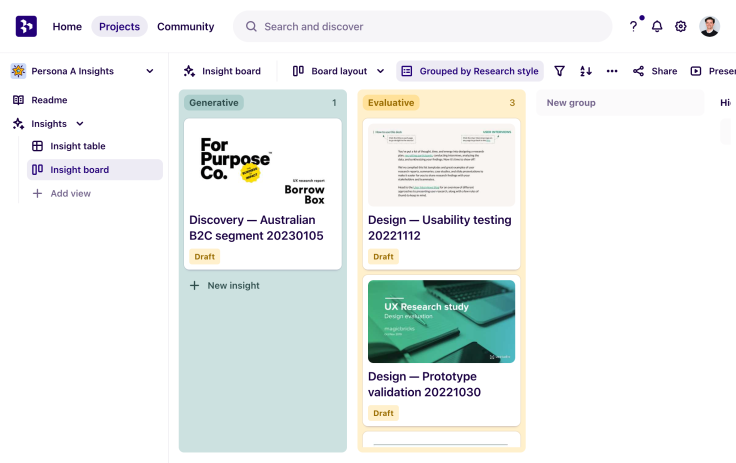
Get repeated value from your research
Once you’ve imported your research, Dovetail automatically makes their contents entirely searchable from the Search and discover bar at the top of your workspace. This allows you to quickly and easily find for trends and insights hidden deep within your files.
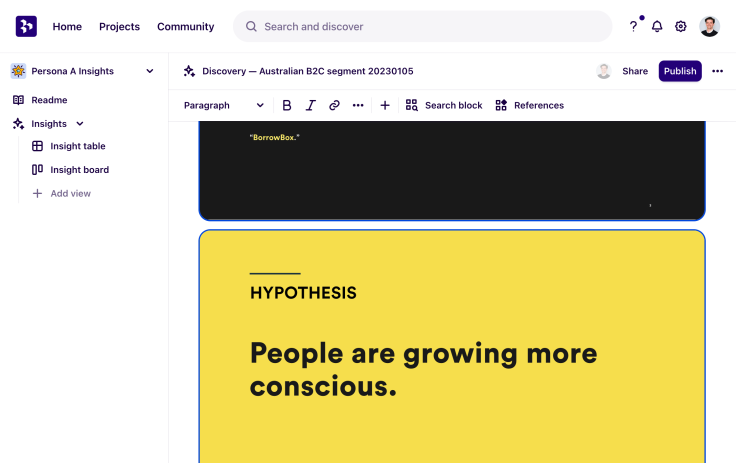
That's it! Now that you know how to gather, upload, organize, and share your existing knowledge, jump into Dovetail and give it a go.


